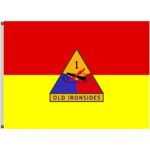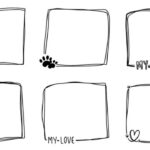I. The Origins of Upcycling: A Historical Perspective
II. Upcycling Through the Decades: Key Developments
III. The Modern Upcycling Movement: Trends and Innovations
The Origins of Upcycling: A Historical Perspective
Have you ever looked at an old piece of furniture or a discarded glass bottle and thought, “I could turn that into something fabulous!”? Well, you’re not alone! The concept of upcycling isn’t a modern fad; in fact, it has roots that stretch far back into history. So, pull up a chair and let’s explore how this sustainable practice came to be!
What is Upcycling?
Before we dive into the history, let’s clarify what upcycling really means. Simply put, upcycling refers to the process of taking unwanted items and transforming them into new products of higher quality or value. It’s about giving new life to things that would otherwise end up in the landfill. And trust me, it’s way more creative than it sounds!
Ancient Practices
Believe it or not, upcycling has been around for centuries! In ancient times, people were all about resourcefulness. They had to be! With limited resources and no convenience stores around the corner, people learned to repurpose materials out of necessity.
- Textiles: In the Middle Ages, textiles that were worn out would be patched up or repurposed into new garments. This was a practical way to maximize resources when fabric was expensive.
- Tools and Utensils: Similarly, metal tools were often melted down and reshaped into something new when they became worn out.
World Wars and Resource Scarcity
Fast forward to the World Wars, and you’ll find that upcycling took on a whole new meaning. Rationing and scarcity pushed creativity to the forefront. People had to make do with what they had, often turning old uniforms into quilts or repurposing cans for other uses. This kind of innovation became a way of life, and it fostered a sense of community as people shared ideas and resources.
The Environmental Awakening
As the decades rolled on, particularly in the 1960s and 70s, a growing awareness of environmental issues began to surface. The mantra of “reduce, reuse, recycle” gained traction, and upcycling began to emerge as a solution to combat waste and promote sustainability.
During this time, creative thinkers started to recognize that upcycling wasn’t just about salvaging materials—it was also about embracing a new way of thinking about consumption. This was a pivotal moment where art, creativity, and environmentalism converged.
Conclusion: A Timeless Practice
So, there you have it! The roots of upcycling are deeply embedded in human history, driven by necessity and fueled by creativity. From ancient practices to wartime ingenuity and environmental consciousness, upcycling has always been about making the most of what we have. Whether you’re turning a wooden crate into a coffee table or transforming glass jars into charming candle holders, remember that you’re part of a long legacy of resourcefulness and creativity.
Next time you consider tossing something away, think of the possibilities! You just might unleash your inner upcycling artist!
Upcycling Through the Decades: Key Developments
Upcycling has truly evolved over the decades, and it’s fascinating to see how it has transformed from a necessity into a trendy lifestyle choice. Let’s dive into these key developments and explore how upcycling has shaped and been shaped by different eras.
The 1970s: The Birth of a Concept
While upcycling as a term didn’t exist yet, the seeds were planted in the 1970s. This era was marked by the environmental movement, which highlighted the need to reduce waste and promote sustainability. People began to realize that instead of throwing things away, they could give them new life.
- DIY Culture: The rise of the do-it-yourself culture encouraged individuals to repurpose old items. Whether it was turning glass jars into storage containers or transforming old furniture with a fresh coat of paint, this decade ignited creativity.
- Environmental Awareness: The first Earth Day in 1970 fostered a growing awareness about waste and pollution, prompting people to think more critically about consumption.
The 1980s and 1990s: From Necessity to Aesthetic
As we moved into the 80s and 90s, upcycling began to gain traction as a creative outlet rather than just a means of survival. During this time, thrift shops and garage sales became hotspots for treasure hunters seeking unique items to upcycle.
- Thrift Shopping: Vintage clothing and retro furniture became fashionable. People started to see the beauty in what others considered “junk,” which laid the groundwork for the upcycling aesthetic.
- Artistic Movements: Artists and designers began to embrace upcycling as a form of art. Works made from discarded materials began to appear in galleries, showcasing how upcycling could also be a statement about consumerism.
The 2000s: Enter the Digital Age
With the rise of the internet and social media, upcycling took on a new life. Platforms like Pinterest and Instagram allowed creators to share their projects widely, inspiring countless others to jump on the upcycling bandwagon.
- Online Communities: The creation of online forums and blogs dedicated to upcycling helped spread ideas and techniques, making it easier for people to learn and share their creations.
- Eco-Friendly Products: Companies started to notice the demand for sustainable practices, leading to the emergence of products made from upcycled materials. This shift made upcycling more accessible to the average consumer.
Today: A Global Movement
Fast forward to today, and upcycling has become a global movement. It’s not just about reusing items; it’s about cultivating a mindset that values sustainability and creativity. Upcycling is now a staple in fashion, home décor, and art, with numerous workshops and events dedicated to educating people on how to get involved.
So, whether you’re a seasoned upcycler or just curious about this creative practice, it’s clear that upcycling has come a long way from its humble beginnings. By understanding its journey, we can appreciate the value it brings to our world today!
The Modern Upcycling Movement: Trends and Innovations
Isn’t it fascinating how something once considered waste can transform into a fabulous creation? Welcome to the exciting world of modern upcycling! Over the past few years, this movement has gained remarkable traction, and it’s not just a trend—it’s a lifestyle shift that embraces creativity, sustainability, and innovation.
What is Upcycling, Anyway?
Before diving into the latest trends, let’s clarify what upcycling really is. At its core, upcycling involves taking discarded materials and giving them a new purpose, often in a way that enhances their value. It’s about thinking outside the box and seeing potential where others see trash.
Current Trends in Upcycling
In today’s world, upcycling has evolved into a vibrant community that champions sustainability. Here are some of the most popular trends:
- Fashion Forward: The fashion industry is a major player in upcycling. Designers are turning old garments into stunning new pieces. Brands like Re/Done and Patagonia create unique items from vintage fabrics or even unsold stock. Imagine rocking a one-of-a-kind jacket made from repurposed denim!
- Home Décor Magic: Upcycling in home décor is huge! From turning old wooden pallets into stylish furniture to transforming glass jars into chic lamp bases, creative home enthusiasts are adding flair to their spaces. DIY blogs and Pinterest are overflowing with ideas that inspire everyone to get crafty.
- Artistic Expressions: Artists are also jumping on the upcycling bandwagon. Sculptures made from scrap metal, wall art crafted from discarded magazines, and installations using plastic waste tell powerful stories about consumption and sustainability. It’s art with a message!
Innovative Approaches and Materials
With the rise of technology, the upcycling movement is also seeing innovative approaches:
- 3D Printing: Artists and engineers are using 3D printing to create new products from recycled plastics. This technology allows for intricate designs and can significantly reduce waste in the manufacturing process.
- Smart Materials: There’s a growing trend in using smart materials that can adapt or change properties. Imagine furniture that can transform shape based on your needs, all made from upcycled materials!
- Community Initiatives: Local workshops and maker spaces are popping up, encouraging people to learn upcycling skills. These spaces not only foster creativity but also build community ties as people come together to share ideas and resources.
The Benefits of Upcycling
So, why should you consider joining the upcycling movement? Here are a few compelling reasons:
- Environmental Impact: Upcycling helps reduce waste and minimizes the need for new materials, lessening the strain on our planet.
- Creativity Boost: It encourages us to think creatively and resourcefully, turning mundane items into something beautiful and functional.
- Unique Pieces: Upcycled items are often one-of-a-kind, allowing you to showcase your personal style and stand out in a world filled with mass-produced products.
In a nutshell, the modern upcycling movement isn’t just about recycling; it’s about reimagining possibilities! So, the next time you’re about to toss something out, pause and consider: how can I give this a new life? You never know what brilliance you might create!










Comments